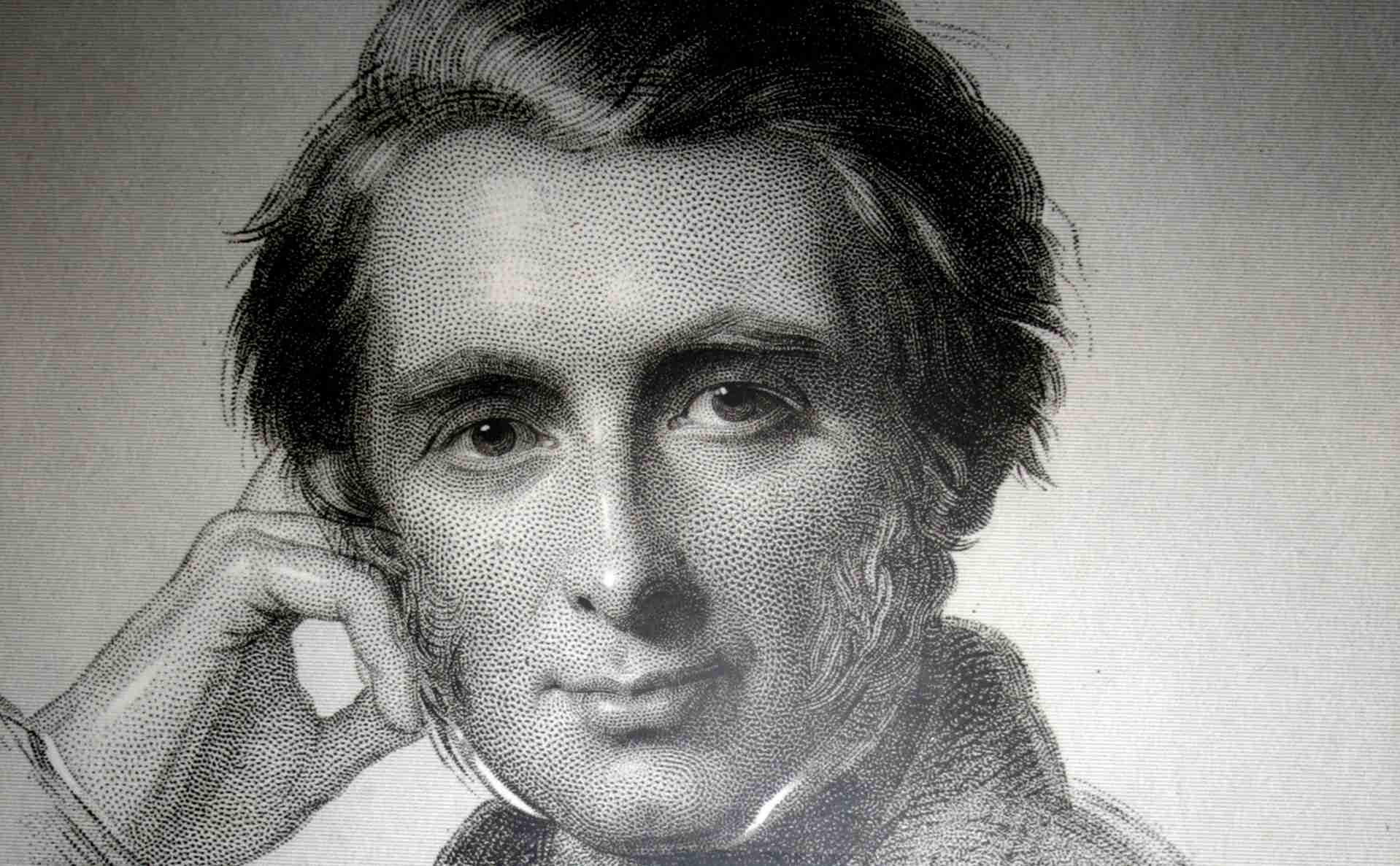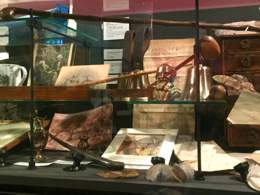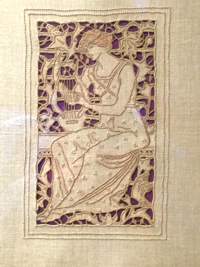
Ruskin Museum

John Ruskin
.jpg)
Brantwood
.jpg)
Blackwell, the Arts and Crafts House
.jpg)
Burne-Jones window in Troutbeck
.jpg)
Interior of Blackwell
.jpg)
Morris & Co. window in Staveley
.jpg)
Interior of Brantwood
.jpg)
William Morris

Full Day
Your morning starts with a scenic drive through typical Lakeland countryside to Coniston Water before climbing up to beautiful Brantwood, the former home of John Ruskin, the leading English art critic of the Victorian era, as well as an art patron, draughtsman, watercolourist, a prominent social thinker and philanthropist. Your entrance to Brantwood is included in the tour price.
Here your guide will introduce you to the many different facets of Ruskin, particularly his philosophy on industrialism and its impact upon the welfare of society. As you explore this beautiful house, his life story and the massive influence that he has had upon art, literature, architecture, ecology, social conditions for the poor and education will come alive. His influence is still present on our lives today and even closer to his own time he had a huge following which included Mahatma Gandhi, Leo Tolstoy and Marcel Proust, Nietzsche, Ibsen, Clement Atlee, Martin Luther King and even, probably, Mao Tse-Tung. In international architectural circles, he was greatly admired by the likes of Frank Lloyd Wright, Walter Gropius and even Le Corbusier.
He was a supporter of J.M.W. Turner, defending his techniques against the savage critics of the day. His writing on art and architecture was a source of inspiration for the creation of the Pre-Raphaelite Brotherhood whom he championed and the subsequent development of the Arts and Crafts Movement, whose unique development started, under his direct influence and close proximity, in the Lake District.
We will also linger at Brantwood long enough for you to take in the panoramic vista of Coniston Water, overshadowed by Coniston Old Man on the opposite shore from the house. Brantwood is the perfect spot for photos across the lake and it won't take long for you to understand why Ruskin was so influential in preventing the industrialisation and development of the Lake District, a most beautiful place in all of England.
From Brantwood, we meander down to the shores of Coniston and into the village where Ruskin is buried. Here, your guide will take you into the Ruskin Museum to see unique and iconic examples of local textile, ceramics and metalwork created by the Lakeland Arts Revival workshops which were centred in the local Lake District areas of the Langdales, Ambleside and Keswick.
Ruskin saw that the industrialisation and savage capitalism of his day was destroying local rural communities, creating real hardship and poverty and this led him to encourage his followers to return to the tradition of hand spinning, also championed by William Wordsworth before him. From here the local lace and linen industries were established. Night classes and the Keswick School of Industrial Arts, founded by Cannon Hardwicke Drummond Rawnsley, a former pupil of Ruskin at Oxford and a founder of the conservation charity, The National Trust, led to the creation of iconic and distinctive copper and brass ware, some of which has Ruskin Pottery cabochons embedded in them like jewels.
All of these beautiful Lakeland Arts and Crafts objects will be pointed out to you by your guide and there will be ample opportunities for you to discuss these themes and objects with each other and your guide as we head off to lunch in the south Lakeland village of Staveley.
Staveley is our lunch stop where there are several small cafés in the village as well as the Hawkshead Brewery. After lunch, we drive to St James's church to view two Pre-Raphaelite stained glass windows.
Of the two windows, the most spectacular is undoubtedly the East window. Designed by Sir Edward Burne-Jones and made by William Morris & Co in 1881, 16 years after the church was built, the window shows the Crucifixion and the Ascension, surrounded by spectacular images of six angels, each playing a different medieval musical instrument. It is regarded as one of the most magnificent Morris windows imaginable and has been described as a 'window of exceptional beauty'.
From Staveley, we drive through the rolling south Lakeland countryside, past farms and traditional slate cottages to the beautiful village of Troutbeck. Jesus church is where you will see the exceptional stained-glass window by the Pre-Raphaelite artists Sir Edward Burne-Jones, Ford Maddox Brown and William Morris. The composition and colours of the window in this church are breathtaking, and even the traditional needlework kneelers on the pews here are a feast for the eyes.
We now move on to your final destination. On a hillside overlooking Windermere is a spectacular house. That in itself is not surprising, as in the 19th and early 20th Centuries wealthy business owners from the North West of England flocked to the Lake District and built comfortable homes for their families - retreats from the noise, soot and pollution of the industrial cities. But Blackwell, the house you are exploring today, is quite remarkable - within its Grade I listed walls is an exceptionally-preserved Arts and Crafts interior.
Perched overlooking lake Windermere, deliberately placed up among the trees, this unique and hauntingly beautiful building is a masterpiece of artistic design. Architect Mackay Hugh Baillie Scott designed Blackwell as a holiday home for Manchester brewer Sir Edward Holt, Lady Holt and their five children in 1901.
During your visit you can sit and soak up the atmosphere in Blackwell's fireplace inglenooks and inviting window seats while enjoying stunning Lake District views. Your guide will help you explore the house, introduce you to the Holt family and help you find out about life in the late Victorian period.
You will discover original decorative features by leading Arts & Crafts designers, including a rare hessian wall-hanging in the Dining Room, leaf-shaped door handles, ornate window catches, spectacular plasterwork, stained glass and carved wooden panelling. There is beauty, exquisite design, delightful details and spectacular views everywhere you look at Blackwells.
The original gardens were laid out by Arts & Crafts garden designer, Thomas Mawson, in a series of terraces to achieve the very best views from the house, looking over the lake towards the Coniston fells. Today, Blackwell is bordered by beautiful flower beds set against a terrace of York stone paving, providing shelter for garden chairs and tables surrounded by fragrant flowers and herbs. On the lower terrace there is a long sweep of lawn where you can stroll and take in the intoxicating beauty of the Lake District, whatever the season.
Before we go, you will have the opportunity to browse the shop which has an enviable reputation for presenting work for sale by the best contemporary British craft makers; upholding the ethos of the Arts & Crafts Movement. You will have the opportunity to buy unique pieces selected for their quality and beauty including fine jewellery, textiles, ceramics, silver, glass, metalwork and wood which represent both established and up and coming talent.

John Ruskin was born in London in 1819, the only son of a successful Scottish sherry merchant. His father encouraged him to take up painting and poetry; his mother hoped that he might be a minister. He was educated at home and at Christ Church, Oxford, where he was profoundly influenced by the evolutionary sciences of the day, especially geology. At the same time, Ruskin started to write about art and architecture, and began a lifelong advocacy of the work of Turner. As a result, he became an inspiration to a generation of younger artists, most notably the Pre-Raphaelite Brotherhood.
At the age of 29 Ruskin married Effie Gray but the marriage was never consummated and ended disastrously six years later. Effie became romantically attached to the painter Millais, whom she subsequently married. Ruskin buried himself in work, in particular a lengthy study of the city of Venice, producing a remarkable three-volume study of the architecture of the city. At the heart of the Stones of Venice he contrasted medieval craftsmanship with modern manufacturing - something hugely influential on William Morris and the Arts and Crafts movement. It marked the maturing of Ruskin's interest in social justice and the beginning of his attempts to influence the shape of society.
In his forties Ruskin fell deeply in love with Rose la Touche. Rose died aged 29 and Ruskin carried his feelings for her with him for the rest of his life. With the death of his father, Ruskin added wealth to influence. He became Slade Professor of Art at Oxford, an educational philanthropist and an increasingly radical voice in Victorian society. In 1878, at the age of 59, he suffered the first of several breakdowns that eventually stopped him working. Ruskin died in 1900 at the age of 81, leaving behind him collected writings that stretch to 39 volumes, thousands of drawings and watercolours, and a legacy of influence that is felt to this day.

John Ruskin left a legacy of influence that stretches from Frank Lloyd Wright to Mahatma Gandhi. He championed many of the tenets of the welfare state, and inspired the founders of the National Health Service, the formation of Public Libraries, the National Trust and many other cornerstones of civil society in the last one hundred years. His influence reached abroad in such areas as women's education, the minimum wage, child labour, and environmental protection and has served both as a restraining influence on unbridled capitalism and a moral conscience for the nations of the world.
Brantwood House is filled with Ruskin's treasures: paintings, furniture, objects d'art and his personal memorabilia. It is a registered museum but is still kept very much as a home. The house affords a unique opportunity to look into the daily life of one of England's most important social and cultural figures. The atmosphere at Brantwood is special, and because so many of Ruskin's possessions remain, it feels as if the man himself has just stepped out into the garden!
When you enter the house, you will be introduced to Ruskin's world by a brief introductory video and are then free to explore, with or without your guide as you please, the seven historical rooms which he occupied during his lifetime, all of which are filled with his furniture, art and objects. For younger visitors there are a range of quizzes and activity sheets.
Your visit to the house also includes the Blue Gallery where there is a changing programme of specially curated exhibitions.

The Ruskin Museum in Coniston was founded in 1901 as this small and historically self-sufficient Lakeland village's permanent memorial to its most famous resident. The museum displays a large collection of his watercolours and drawings, all lovingly selected by the man Ruskin called his Aide-de-Camp, W.G. Collingwood, author of the first Life of John Ruskin. Collingwood was particularly fascinated by the way Ruskin developed his ideas visually, through his drawings and sketches, studying the particular with the closest possible attention before speculating on the underlying general principles - whether of clouds, trees or mountains, skies or Gothic buildings. Plaster casts of leaves and Greek coins; giant feathers; crystal formations; all help to illuminate how Ruskin saw.

Towards the end of his life, Ruskin identified the Langdale Linen Industry as his most successful practical attempt to improve a local economy through a 'Rural Arts Revival', something better known today perhaps as the Arts and Crafts Movement. Ruskin preached truth to local materials and traditional craft skills, the job satisfaction instinct in hand-work as opposed to the factory, making for need and joy rather than profit. The Langdale Linen Industry was also about validating worthwhile work for women.
The Ruskin Museum contains an extensive collection of hand-spun, hand-woven linen, including items embroidered from nature, and many fine examples of Ruskin Lace, a form of cut or reticella lace, and needle lace, inspired by the sumptuous ruffs and collars worn by sitters in portraits by Titian, Tintoretto, and Veronese.
One of the museum's treasures is Ruskin's funeral pall of hand-spun, hand-woven Langdale Linen, embroidered with wild roses and buds in a design by Harold Stabler (Director of the Keswick School of Industrial Arts), and worked by Mrs Rawnsley (wife of Cannon Hardwicke Drummond Rawnsley), Marion Twelves (Langdale Linen Industry), and a team of ladies from Keswick.

The church of St James was designed by the Manchester architect J.S. Crowther in the "gothic" that seemed the only religious style in 1865. It has rubble walls of local stone with window reveals and other masonry trim of sandstone. The chancel reflects the influence of the Arts and Craft movement. Choir stalls are by Simpson's of Kendal and there is work by the Keswick School of Industrial Art.
The glory of the building is the East window by Sir Edward Burne-Jones and William Morris.
Since 1865, St James's has been adorned and improved mainly by contributions from Parishioners. As well as stained glass, important gifts were the attractive lychgate in 1880, a new altar in 1899, a new organ in 1910, the lectern in 1918 and the reredos and the pulpit in 1925.

Jesus Church is a true jewel in the crown of the Church of England, as Troutbeck village is for the Lake District.
Troutbeck village consists of approximately 90 dwellings of which just over half are second or holiday homes. The village centre has a communal building which houses both the Post Office and the Village Institute. This forms the heart of the village, with Jesus Church situated at the centre of the parish, almost but not quite, co-incident with it. Jesus Church is however, central to village life, for both church and non-church people - the architectural excellence and situation of the church building make it a great attraction to both locals and non-locals alike. The open church policy provides an exemplary welcome to the frequent hill-walkers and passers-by.
Troutbeck Church was probably founded about five hundred and thirty years ago but the present building is not much more than two hundred and eighty years old, as nearly the whole of it dates from 1736. It was so extensively restored and altered in 1861 that at a first glance it might be taken for a Victorian church. The changes were particularly drastic inside the building, but there is an old water-colour drawing (now hanging near the door) showing it as it used to be. It had a tiny railed-off altar at the east end, a large box pew belonging to Admiral Wilson of The Howe on the north side of it, another faculty pew belonging to the Brownes of Townend on the south side, whilst the rest of the seats in the chancel were occupied by other leading inhabitants of Troutbeck and Applethwaite.
Separating the chancel from the nave was a slender oak screen. The seats in the body of the church were simple oak benches. The pulpit, reading desk and clerk's seat formed a "three-decker," and at the west end there was a gallery. All these furnishings were swept away in 1861 and many of them were replaced in varnished pine, as was fashionable at that time. In the 1930's the chancel was altered again, being furnished and panelled with fine seventeenth-century carved oak which came originally from Calgarth Old Hall down by the shores of Windermere.
The east window, a large one in comparison with the small church, is filled with stained glass designed by three of the Pre-Raphaelites: Sir Edward Burne-Jones, Ford Maddox Brown and William Morris. It is remarkable to find a window by such distinguished artists in this country church. The colouring is extremely good and the general effect is very light and pleasing; it is in marked contrast with most of the other Victorian glass in the smaller windows. The Crucifixion in the centre of the east window is notable for portraying our Lord without a beard. Another window by Burne-Jones is in the north wall and is conspicuous for its brilliant reds and blues.

Blackwell retains many of its original decorative features. During the late nineteenth century there was a resurgence of interest in hand-made crafts, encouraged by such figures as William Morris and John Ruskin. In a reaction to the mass produced and impersonal designs available at the time, artists, designers and makers drew inspiration from the skilled makers of the past. They reinvigorated traditional techniques and process of making and placed an emphasis on quality and natural beauty.
Throughout the house the architect, Baillie Scott, has incorporated a wide variety of crafts. These include tiles in the fireplaces, carved stone and wood panelling, stained glass, mosaic floors, wrought iron and lead work, hessian wall hangings and the beautiful plaster work of the White Drawing Room. Each of these details are carefully woven into the fabric of the historic building rather than being 'applied' simply as decoration.
The rooms also contain furniture and objects by many of the leading Arts & Crafts designers and studios. These include metalwork by WAS Benson, ceramics by Pilkingtons and Ruskin Pottery and furniture by Morris & Co., Stanley Webb Davies, Ernest Gimson and Baillie Scott himself.
To display the available dates for this tour please answer the questions below.
We can accept bookings up to 30 minutes before the departure time from your chosen pickup point, provided that we have availability.
You will not need to print anything out. Just book, read the confirmation email and wait at the pickup point!

No dates found for this tour